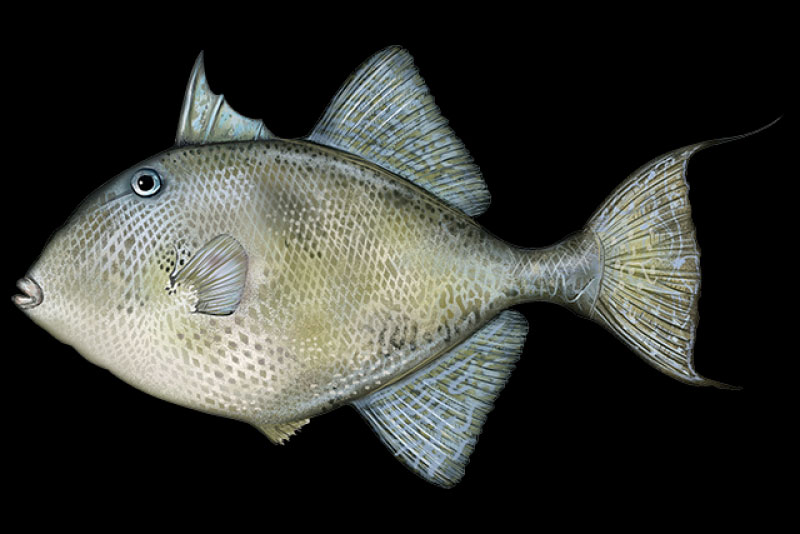Gray triggerfish are an interesting—and frustrating—target for anglers especially when hitting the inshore wrecks along the DelMarVa coast. Though they’re common throughout the Mid-Atlantic region and can be found both inshore and offshore, these relatively small but incredibly tasty fish can be extremely difficult to catch. Use these trigger-fishing tactics, however, and you’ll soon be filling the cooler.
RIGGING properly is incredibly important, because these fish have tiny mouths which are dominated by a set of parrot-like teeth As a result:
- You need to use shockingly small number four or number six hooks.
- Baits need to be similarly pint-sized; a single squid tentacle cut in half or a dime-sized chunk of squid mantle are good choices.
- Tie your hook directly to 15 or so pound test line, with no leader.
- Use 15 or larger class spinning or casting gear. Many anglers will simply add a lighter leader to rods used for mahi bailing.
FINDING triggerfish is not usually difficult, and often they’re encountered by accident. They like to congregate around structure inshore (like those wrecks and artificial reef sites) and offshore under flotsam like logs, buckets, or buoys. In fact, triggerfish are commonly spotted by anglers probing flotsam in far-offshore places like Baltimore Canyon, when they're bailing for mahi-mahi around lobster balls or weedlines.
- When you see a triggerfish near the surface or under flotsam, slowly pull within casting distance and flip your bait near the fish.
- Usually, they’ll rush out from under the cover to attack anything within about 10 feet. But don’t drop the offering right on top of the fish, or it may be spooked by the splash.
- Inshore, you may encounter triggerfish holding near wrecks and reefs. In this scenario they will often be too deep to spot, so probe the waters by dropping down a top-and-bottom rig that’s sized for spot or croaker. Again, stick with tiny hooks and baits.
- Let the rig hit bottom, then slowly retrieve it at a creep through the water column.

Bizarre Triggerfish Fishing Tip
When you spot triggers near flotsam but the fish won’t eat, all is not lost—you can catch them with a technique called “bucketing”. Trigger fish love swimming into and hiding inside of flotsam, which includes five-gallon buckets. So when you have one that won’t bite, bring the boat as close as possible, tie a line to a bucket, fill it with water and add some lead, and let it sink next to the boat. Sometimes the trigger fish will swim right in, and you can simply pull the bucket—and your dinner—into the boat.
A Warning About Triggerfish
Those buck teeth will take a divot out of your finger or hand, so be careful when getting the hook out. Also be careful of the fish’s “trigger,” the sharp spine on its dorsal fin. When the dorsal fin is upright it can’t be forced down. Push down the second spine, however—the trigger—and the dorsal un-locks and can then be pushed flat.
Editor's note: This article was originally published in March of 2017 and was last updated in July of 2024.